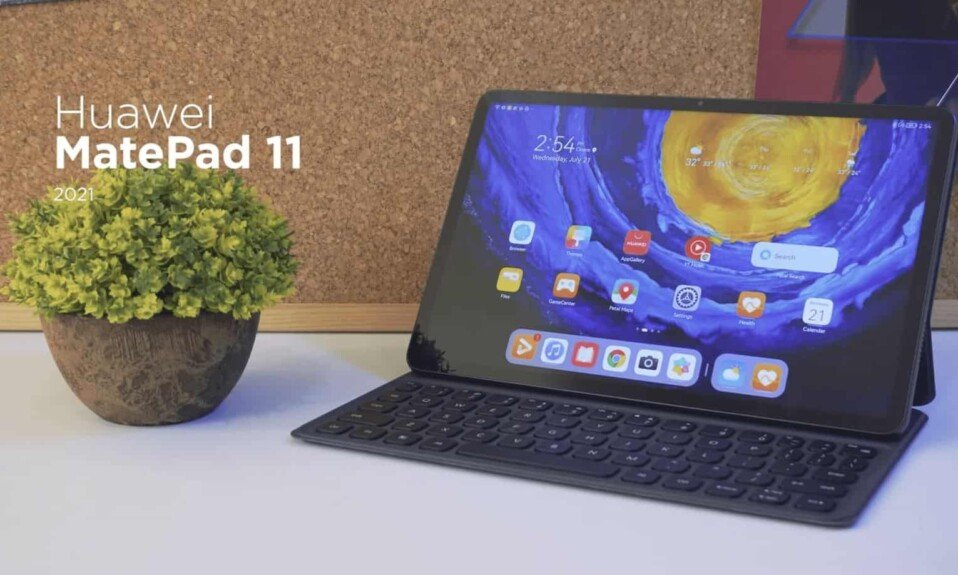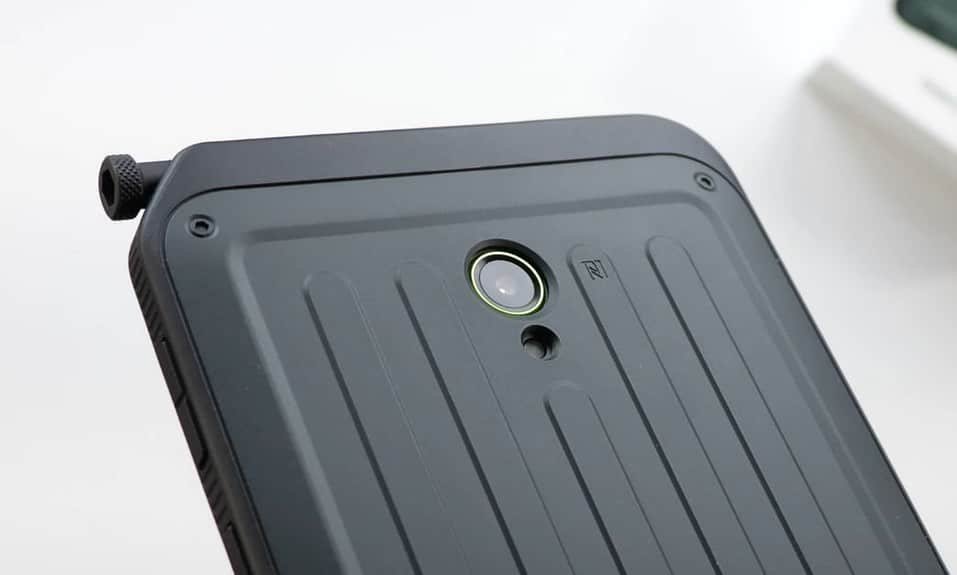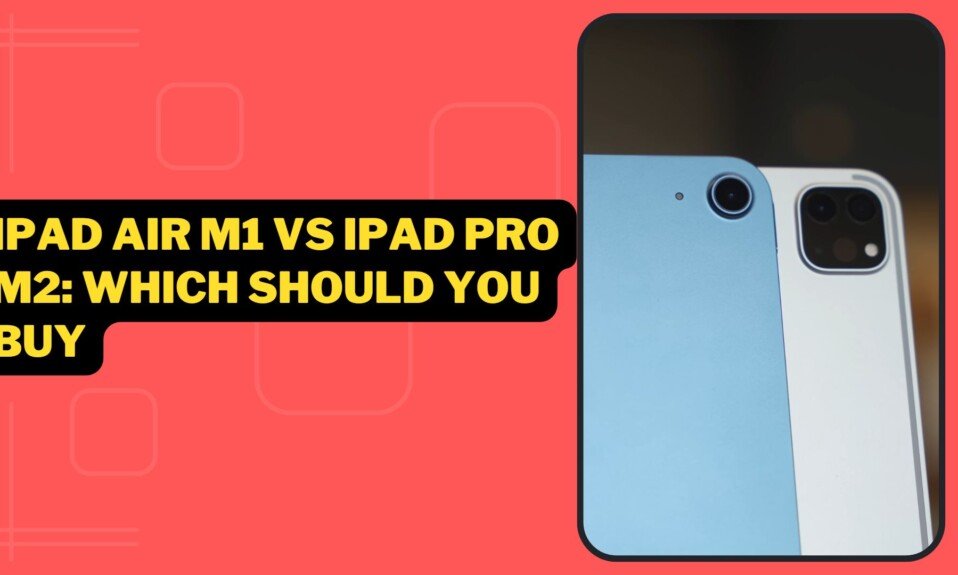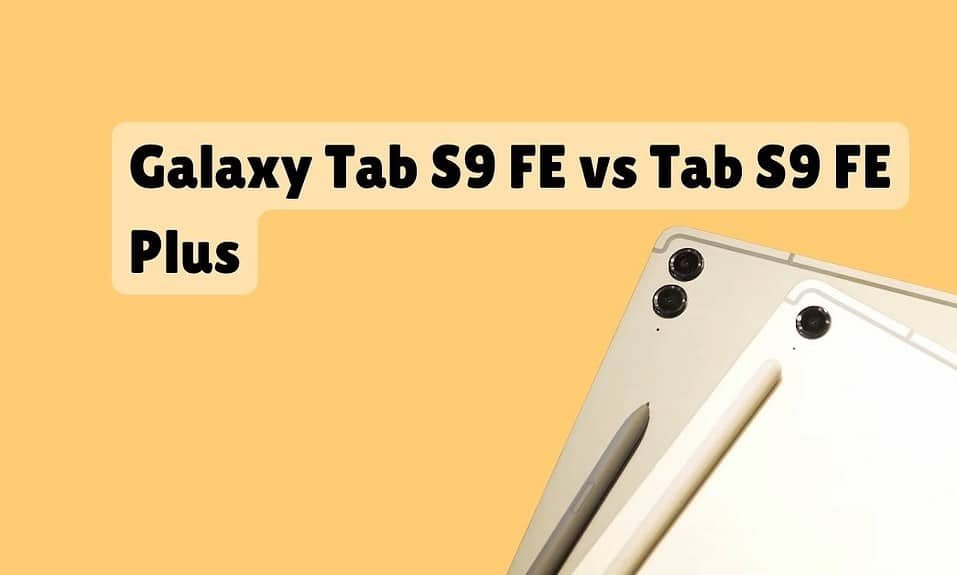The Huawei MatePad 11 is launching its first tablet with its own HarmonyOS 2.0 system on the market. For $400, the MatePad 11 offers a large 11-inch IPS display with 120Hz, a Snapdragon 865 high-end processor, four speakers, and an operation with a pen and keyboard dock. The equipment sounds like a real price/performance tip. Or is there a catch on the MatePad 11? You can find out in the following review.
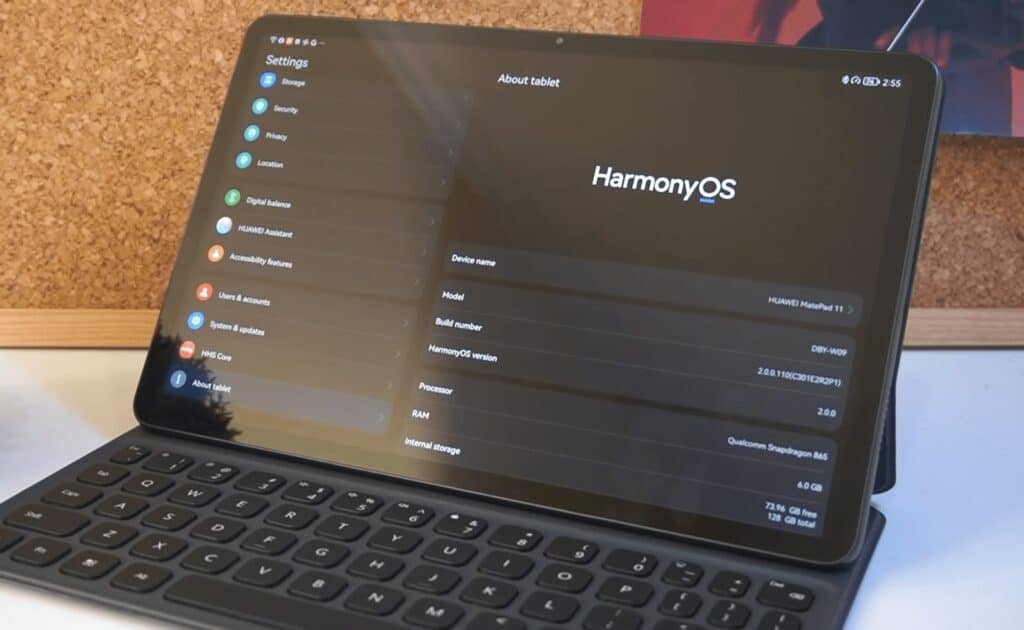
Pros and Cons
| PROS | CONS |
| Powerful platform | No headphone connection |
| Excellent battery life | No Google Play Services |
| Most apps available | No SIM slot (network reception) |
| 120 Hz refresh rate |
Key Specification
| Huawei MatePad 11 | |
| Chipset | Qualcomm SM8250 Snapdragon 865 5G (7 nm+) |
| CPU | 1 x Cortex-A77 Based 2.84 GHz + 3 x Cortex-A77 Based 2.4 GHz + 4 x Cortex-A55 Based 1.8 GHz |
| GPU | Adreno 650, 587 MHz |
| Display | 10.95 inches IPS LCD, 120Hz |
| Memory | 64GB 6GB RAM, 128GB 6GB RAM, 256GB 6GB RAM |
| Camera | 13 MP, f/1.8, PDAF 8 MP, f/2.0 |
| Color | Matte Gray |
| Sensors | Accelerometer, gyro, proximity, compass |
The tablet lies comfortably in hand. Due to its heavyweight of 485 grams, it is a bit difficult to hold after prolonged use. However, this is normal for a tablet of this size. The display bezels measure 8.5mm on all sides. This is just enough to prevent accidental incorrect entries. The dimensions of the case are 258.3 x 165.3 x 7.3 millimeters. So it’s a very slim device.
The four speakers are on the left and right. When holding in landscape mode, the speakers are partially covered a little. However, this does not affect the sound much, as you never cover all speakers simultaneously. A fingerprint scanner unlocks there is unfortunately no. However, it is possible to unlock the tablet using Face-Unlock. Due to the size of the tablet, this is the more convenient method anyway. To wake up from standby, you can use the power button or tap the display twice.
Design
| Dimensions | 253.8 x 165.3 x 7.3 mm |
| Weight | 485 g (1.07 lb) |
| Screen Size | 10.95 inches |
| Resolution | 2560 x 1600 pixels |
| Display Type | IPS LCD, 120Hz |

Except for the front, the Huawei MatePad 11 is made entirely of plastic. It is a shame that Huawei did not use metal because the device doesn’t look particularly classy. Nevertheless, the manufacturer has taken great pains to give the device an appealing design.
The surface on the back has a matt surface and is pleasantly grippy. It is also largely resistant to fingerprints and grease streaks. We can also attribute a good quality to the tablet. The housing is torsion-resistant, and the buttons sit comfortably tight in the plastic frame. The power button is on the top left in landscape mode, and the volume controls are on the top.
Overall, the Huawei MatePad 11 has an attractive design. Our only point of criticism is that the camera protrudes about 2 millimeters on the back. The notepad 11, therefore, tilts slightly flat on a surface, which is a bit annoying, especially when drawing with the M-Pencil.

We have the M-Pencil (Gen. 2), which according to the manufacturer, has 4096 pressure levels and low latency of 2ms. The pen can be magnetically docked on the top of the tablet for charging, and the system automatically displays the charge status.
Display
The large 11-inch panel has a sufficiently high resolution and a high-quality IPS panel. The fact that the manufacturer does not use OLED technology here is forgiven, given the fluid display at 120Hz.

The Huawei MatePad 11 has a 10.95-inch display. In contrast to the MatePad 12.6, there is no AMOLED display but an IPS panel. However, there is no “normal” refresh rate of 60Hz, but a full 120Hz. The resolution is 2560 x 1600 pixels, which ensures a sufficiently high pixel density at which no individual pixels can be recognized with the eye.
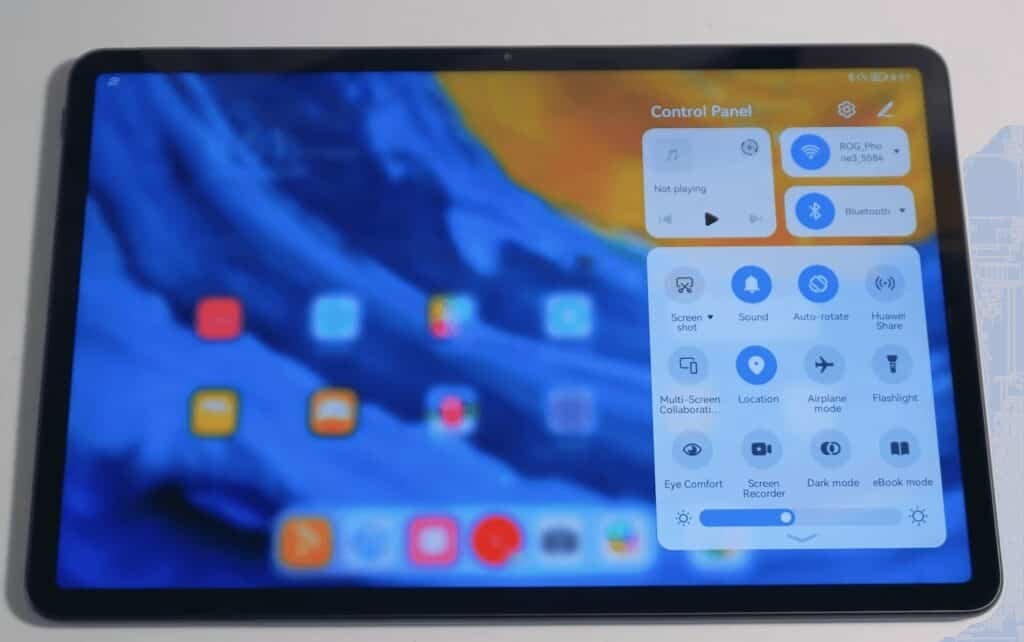
Even if IPS clearly lags behind AMOLED, the built-in panel is a very high-quality one. The contrast is surprisingly good, and even dark mode can still be used comfortably. A good viewing angle stability is also given so that the tablet is always easy to read even when it is set up. The brightness reaches a maximum of 740 lux. This is a good value, albeit significantly less than for AMOLED. In any case, the Huawei Matepad 11 can still be read outdoors. The illumination of the panel is quite even. However, when the display content is white, you can see slight shading at the edges, typical for IPS panels.
Performance
| Processor | 1 x Cortex-A77 Based 2.84 GHz + 3 x Cortex-A77 Based 2.4 GHz + 4 x Cortex-A55 Based 1.8 GHz |
| GPU | Adreno 650, 587 MHz |
| RAM | 6 GB |
| Internal storage | 64GB, 128GB, 256GB |
| Storage expansion | microSDXC (dedicated slot) |
| OS | HarmonyOS 2.0 |

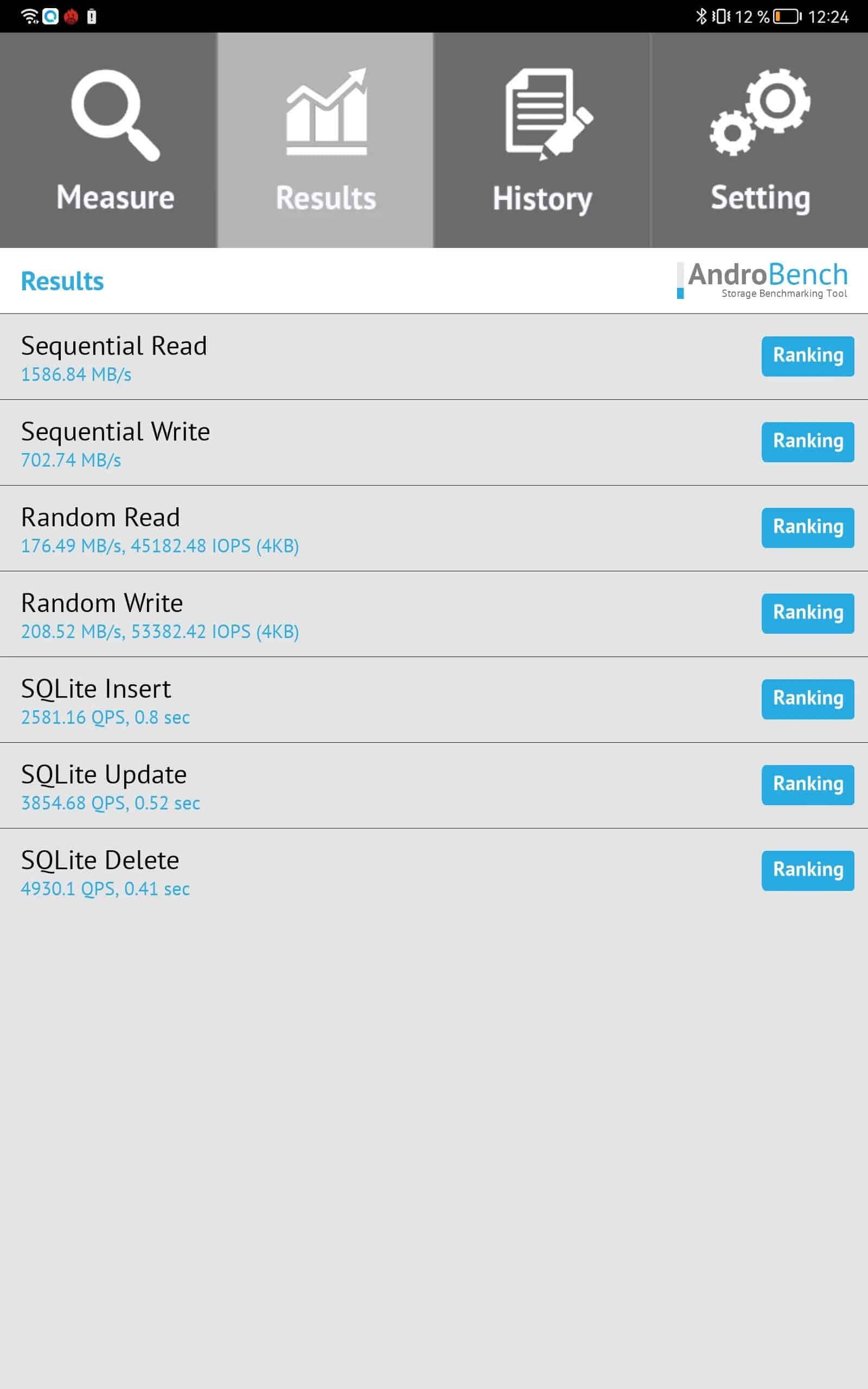
A Snapdragon 865 processor takes care of the performance in the Huawei MatePad 11. In our opinion, this SoC is an excellent choice for a tablet, as it “feels” as fast as a Snapdragon 888 and costs significantly less. The processor works with a fast prime core with 2.84 GHz and three Cortex A77 cores with 2.42 Hz in the performance cluster. 4 Cortex A55 cores with 1.8 GHz are used in the energy-saving cluster an Adreno 650 GPU provides the graphics performance. Production takes place in the modern 7-nanometer process, which, in contrast to the current 5-nanometer chips, also ensures better thermal properties. In addition, the Huawei MatePad 11 has 6GB of RAM and 64, 128, or 256GB of internal storage.
Antutu result

Geekbench single result

Geekbench Multi result

As expected, the benchmarks show that the MatePad 11 is a real performance monster and easily outperforms even more expensive tablets like the Samsung Tab S6. The speed in the system and apps is excellent, and you hardly have to put up with waiting times. The high performance is, of course, a big advantage, especially for gamers, because even demanding titles can be played on the device without any problems. The heat development is always green, and the MatePad 11 barely gets warm even under heavy loads. The 3DMark stress test also confirms that the MatePad has a constant performance without thermal throttling. The temperature safely reaches 40 ° C at the hottest part of the case.
The high system speed due to the Snapdragon 865 is definitely one of the strengths of the MatePad 11. Games and apps can be used without any restrictions, and the performance should be sufficient for the next few years without any problems.
Software
On the software side, Huawei offers a dark mode as well as a mode to protect the eyes with reduced blue radiation. In addition, an eBook mode can be used, which changes the display to black and white and reduces the blue radiation. We definitely found the eBook mode very pleasant for reading texts. Otherwise, the font size and display size can be set and the color temperature can also be set continuously. The MatePad 11 comes with relatively cool colors from the factory. If you like that, you can try the “natural color tones” mode or adjust the color temperature yourself.
There is also a positive surprise with DRM protection. For reasons completely inexplicable to me, the MatePad 11 has Widevine L1 and is therefore suitable for viewing pay-to-watch providers in full resolution. Netflix and Disney-Plus are therefore not a problem, although Amazon Prime Video (as so often) blocks the activation of the higher streaming quality. HDR content can also be used.
Harmony OS 2.0
The Huawei MatePad 11 to feature Huawei’s Harmony OS. The development of its own operating system took the manufacturer a lot of time and we were accordingly very excited. After a few days of practical use, the initial euphoria subsided somewhat: Ultimately, Harmony OS 2.0 is a system that is very similar to the old EMUI user interface based on Android. The structure of the system and the functionality are largely the same. Only the design has been spiced up with new icons and a different font. In addition, the system animations have been improved and now appear more fluid and natural. Ultimately, anyone who has tried EMUI will find their way around Harmony OS 2.0 straight away.
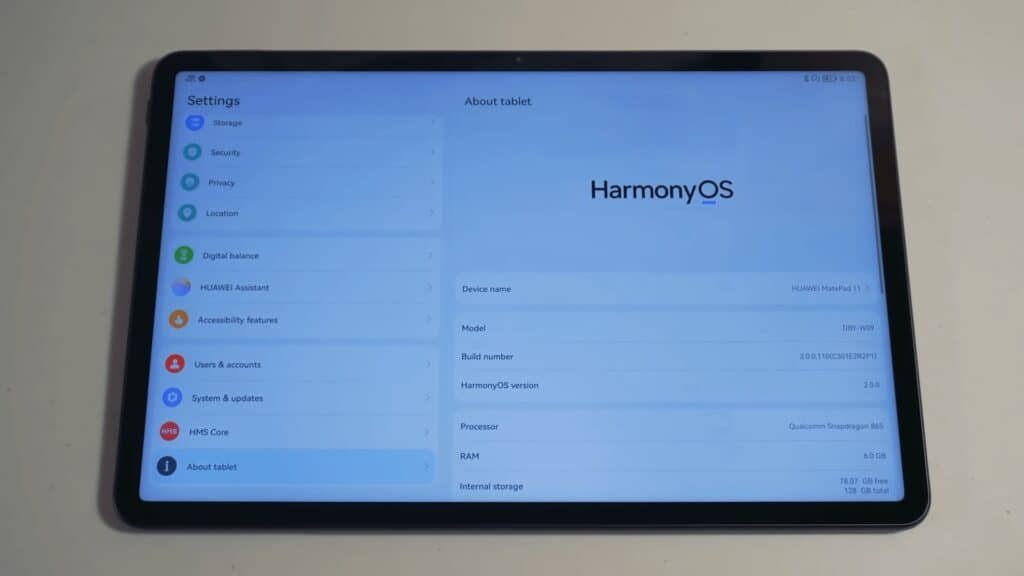
As far as the compatibility with Android apps is concerned, we were able to find almost no restriction, except for the waiver of Google Play Services and the PlayStore.
Harmony OS offers an extensive range of functions, as was already known from EMUI. We didn’t miss anything here. Only the amount of bloatware in the form of third-party apps and games is a bit too heavy. The pre-installed software can, however, be uninstalled without exception. Harmony OS is a mature system that is based on the old EMUI interface and improves it slightly. What you still have to do without are the pre-installed Google apps. With the Aurora Store, however, you have a convenient and safe alternative solution to install the desired software. All of this is not optimal, but it is easy to live with.
Camera
| Rear | 13 MP, f/1.8, PDAF |
| Front | 8 MP, f/2.0 |
| Video recording | 1080p@30fps |
There is an 8-megapixel selfie camera on the front and a 13-megapixel camera on the back. The quality is sufficient for one or two snapshots.
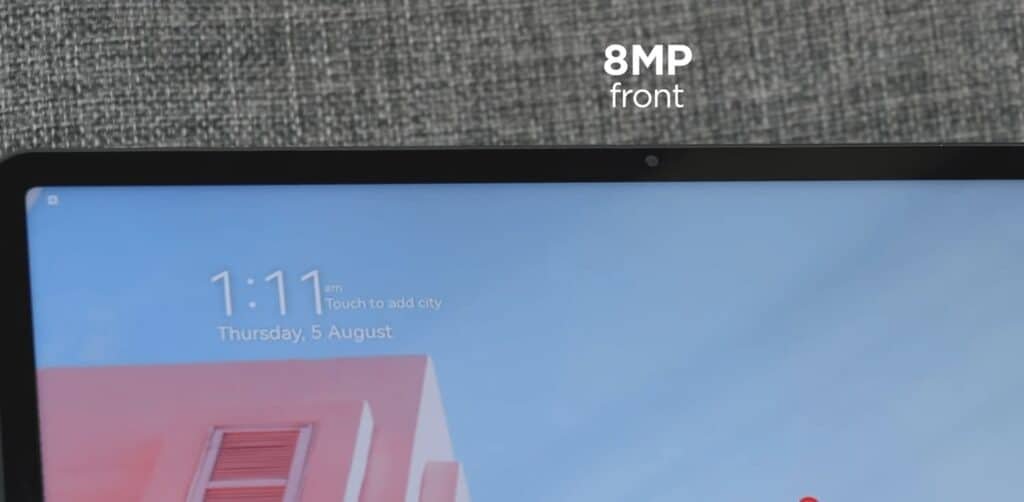
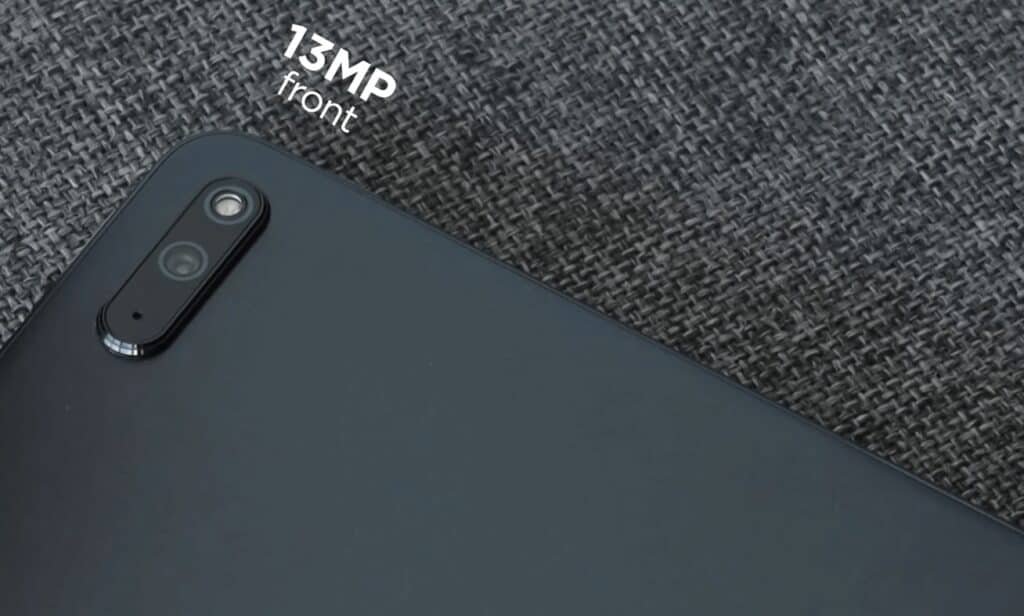
The Huawei MatePad 11 does not have a SIM slot. To access the Internet while on the move, you have to use the smartphone’s hotspot function. Otherwise, the smartphone has the latest connectivity standards. WiFi 6 is available, as is Bluetooth 5.1. There were no problems here in the test. Reception and data throughput was good at all times. With Bluetooth, it should only note that the aptX codecs for music transmission are not available.



Instead, the transmission only occurs via SBC, AAC, or LDAC if you have appropriate headphones. In addition to an acceleration and brightness sensor, Huawei also packs a gyroscope, a Hall sensor for smart covers, a gyroscope, and an e-compass into the device. You have to do without NFC, which would not have provided any added value without Google Pay support. An infrared remote control and an FM radio are also not available.
Multimedia
| Headphone jack | No |
| Loudspeaker | (4 speakers) |
| Audio Features | Tuned by Harman Kardon |
Unfortunately, there is no headphone connection for listening to music, which is criticized for a tablet. The sound through the four loudspeakers can really convince. The notepad 11 delivers a clear sound that even has an audible bass.
Battery Life
| Capacity | 7250 mAh |
| Type | Li-Po |
| Quick Charging | Fast charging 22.5W |
| User-Replaceable | No |
The Huawei MatePad 11 has a 7250mAh battery. This is a good value, although the Xiaomi Mi Pad 5 has even more capacity to offer. Nevertheless, the runtime turned out to be excellent in our test. The battery consumption for one hour of YouTube is only 6%, and when gaming, around 10% battery is sucked per hour, as is the case with social media use. The Notepad 11 can easily last a whole day of heavy use with a lot of gaming or taking notes at university/school. The standby consumption is also pleasantly low at 5 percent per day.
PCMark battery result

In the PC-Mark Battery Benchmark, the Huawei Matepad 11 achieved 12 hours in 60Hz mode and 11 hours in 120Hz mode. Also, you won’t notice a big difference in the runtime in practical use as long as you use the dynamic model.
The Notepad 11 is charged with 22 watts via the Huawei mCharge power supply. It takes an hour and 45 minutes to charge. In the settings, there is the option to charge the battery gently and thus increase the longevity.
Connectivity
| SIM | No |
| Bluetooth | 5.1, A2DP, LE |
| Wifi | Wi-Fi 802.11 |
| Sensors | Accelerometer, gyro, proximity, compass |
There is a USB-C port on the bottom. This is a USB 3.0 port that can also use to connect monitors. However, a USB 3 cable must be used as the supplied cable only supports USB 2.0. Another positive thing to be mentioned is that the internal memory can be expanded via micro SD. In the past, Huawei often only enabled memory expansion using its own (expensive) nano memory cards. Another positive surprise is that the tablet has a multi-colored notification LED.
Conclusion!
The Huawei Matepad 11 is a successful tablet that can convince a strong price/performance ratio in the test. The advantages of the tablet are clearly the smooth display with 120Hz and the high-performance thanks to the Snapdragon 865 processor. Input with the stylus was also convincing.
There is also an optional magnetically dockable keyboard to turn the device into a work machine on the go. We see criticism in the absence of a SIM slot and the design, which is more functional than beautiful. In addition, you have to be able to live with Harmony OS, which includes all Android apps but does not support Google Play Services. If you can live with these points of criticism, you won’t get a more powerful tablet at this price on the market. As an alternative, of course, there is the Xiaomi Mi Pad 5.
